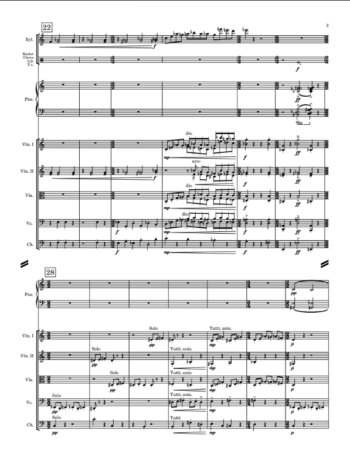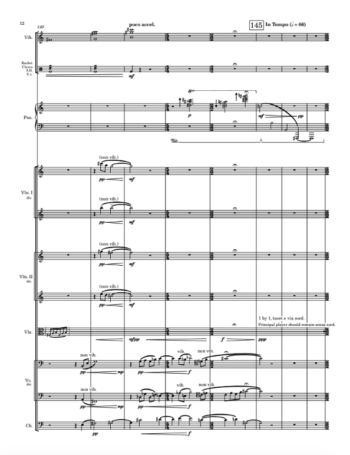Description
First Prize; 2018 Douglas B Reeves Chamber Orchestra Competition at the University of Wyoming
Premiered by the University of Wyoming Chamber Orchestra, James Przygocki, conductor
at the Buchanan Center for the Performing Arts, Laramie, WY; February 9, 2019
Instrumentation:
String Orchestra (minimum 4.4.4.4.2)
Piano
Percussion (2 Players) –
1 – Xylophone, Vibraphone, Temple Blocks,
2 – Ratchet, Claves, Snare Drum, Tam-Tam
Program Notes
What draws us into the desert is the search for something intimate and remote. – Edward Abbey
White Rim was composed for a program that included two Serenades for Strings – Pyotr Illyich Tchaikovsky’s “Serenade for Strings” and Wolfgang Eine Kleine Nachtmusik. A serenade typically serves as light music to celebrate and commemorate an individual or an event. In this instance, Chase extends the meaning to commemorate the desert landscape of Canyonlands National Park.
I first visited Canyonlands National Park in March of 2017. He quickly developed a relationship with the desert and returned to it the next year in 2018. I wrote the following in my journal regarding the Desert Southwest geographic region during that first trip:,
“It is something of a paradox: it is both intimate, yet seems to repulse you with every spine of a cacti and every step you take in which you are hopelessly out of water. It is remote, yet, sitting on top of the two-thousand foot tall cliffs is a highway that takes several days to reach, despite it being only a few miles away.”
In this work, I compose the landscape and stories of the region in a musical setting that both celebrates the region and the composer’s paradoxical relationship with the landscape he has fallen in love with. The composition can be viewed through two lenses, a day in the desert canyons of the White Rim, or as a metaphor for the Anasazi’s decline and abandonment of the region.
The work opens, with xylophone, piano, and strings in unison playing a short motivic idea, immediately setting up the sense of barrenness that is such a common feeling in the desert. Yet, there seems to be something that used to be there, that provided visible life to the landscape. The section is titled “Portals to the Anasazi,” and depicts the Native American story that the Anasazi, fleeing drought, famine, and war, fled back through a portal to the world from which they came, leaving planet earth to go back to the third world. Musically, once this occurs, the strings die into a shimmering tremolo, while the piano and temple blocks provide a back and forth of rhythmic question and answer.
The focus of the work shifts in the middle section, “Red Rock’s Glow”, as the music depicts the setting of the sunbathing the rock walls in a warm glow of sunshine. As the depths of the colors become more intense, so does the music, splitting the ensemble into a solo string quartet and a ripieno orchestra playing aleatoric patterns creating a wash of color behind the strings. As the sun sets behind the horizon, the colors fade away, and the piano tolls seven bells as the sky fades to black.
The third and final section of the work, “Desert Night”, brings back the thematic material from the beginnings of the work, but repaints the music in an aural atmosphere that seems cold and even more barren than the opening. Ponitcello drones provide an iciness to the ensemble and melodic ideas become ostinato to build the tension that one feels on barren land.








